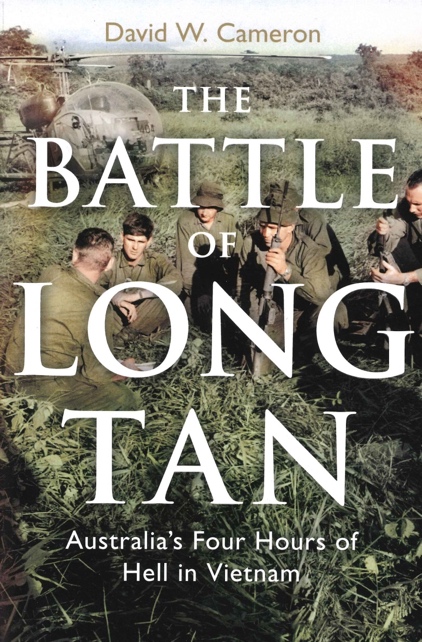Marking the 50th anniversary, The Battle of Long Tan is a detailed and well written account of one of Australia’s most significant battles during the war in South Vietnam. It is arranged into three parts: ‘the war’ provides context; ‘the battle’ provides the details; and ‘the aftermath’ considers the days following the battle and the long-term consequences of the action.
On the afternoon of 18 August 1966, a rubber plantation in Phuoc Tuy Province, South Vietnam, Australian and New Zealand soldiers fought one of their bloodiest and most significant battles of the Vietnam War. The Australians had arrived at Nui Dat four months earlier to open up the province. While out on patrol, Delta Company of the 6th Battalion, Royal Australian Regiment, originally numbering just 105 Australians and three New Zealanders, engaged with 2000 enemy Vietcong guerillas and North Vietnamese main force soldiers.
Under heavy fire and short on ammunition, the Australians could only guess at the enemy’s strength and number. David Cameron’s book is subtitled Australia’s Four Hours of Hell in Vietnam and for the next four hours that is what the troops faced. Outnumbered 20 to 1, and under intense enemy fire, D Company fought off wave after wave of enemy assaults in monsoonal conditions. Royal Australian Air Force helicopters dropped boxes of ammunition to resupply the troops as the firefight continued, but as the evening went on the situation grew even more dire. And then, about 7 pm, when all seemed lost, a relief company of infantry, in armoured personnel carriers (APCs), arrived and drove off the enemy.
Morning light revealed shattered woodland, trees bleeding latex – and hundreds of dead enemy soldiers who had fallen in the numerous assaults against the smaller force. What was first thought by the Australians to be a significant defeat quickly turned out to be a major victory.
But the cost was high. Seventeen Australian soldiers were killed and 25 were wounded, one of whom died nine days later. Official reports put enemy deaths at 245, but some say up to 800 were killed and as many as 1000 wounded.
Drawing on unpublished first-hand accounts and interviews, Cameron brings to life the events of this famous battle as it unfolded – minute by minute, hour by hour – and reveals the deeds of heroism and mateship now part of Australia’s Vietnam War story. His compelling account commemorates the men who fought in the rubber plantation at Long Tan – and those who did not come home.
But while conducting his research he found that many of the veterans were more affected by the aftermath, from having to return to the plantation in the days after to recover and bury the dead. “When the commander of D Company, Major Harry Smith, told the men they were going back in they didn’t appreciate it,” Cameron said. Cameron says that Smith saw the importance of gaining psychological control over the battlefield, of recovering the bodies. “By all accounts now he made the right decision and all the men I spoke to agreed that it was the right thing to do.” Cameron realises it was only through speaking to the veterans that he was able to gain this insight.
Cameron is a paleoanthropologist and archaeologist by profession and has conducted a preliminary archaeological survey of the Anzac Gallipoli battlefields. He is the author of six books on aspects of the Gallipoli Campaign, including The Battle for Lone Pine: Four Days of Hell at the Heart of Gallipoli. Unlike his earlier books on Gallipoli, Cameron was able to talk to veterans of the battle and portray different perspectives of the events.
The Battle of Long Tan includes a good number of black-and-white as well as colour photographs. There is a good quality map of Phuoc Tuy Province as well as several three-dimensional images showing the battlefield and unit locations at various stages of the battle. A map of the space between Nui Dat and the battlefield would have assisted in following the paths of other infantry and APC units. The notes and bibliography are extensive and the index is detailed.
Cameron has well achieved his objective of “Honouring these people by telling their stories, by allowing them to tell their stories. We need to understand what people have gone through and document as much as we can.” The Battle of Long Tan is a high-quality product and highly recommended to those with an interest in Australian military history.

Contact Marcus Fielding about this article.






